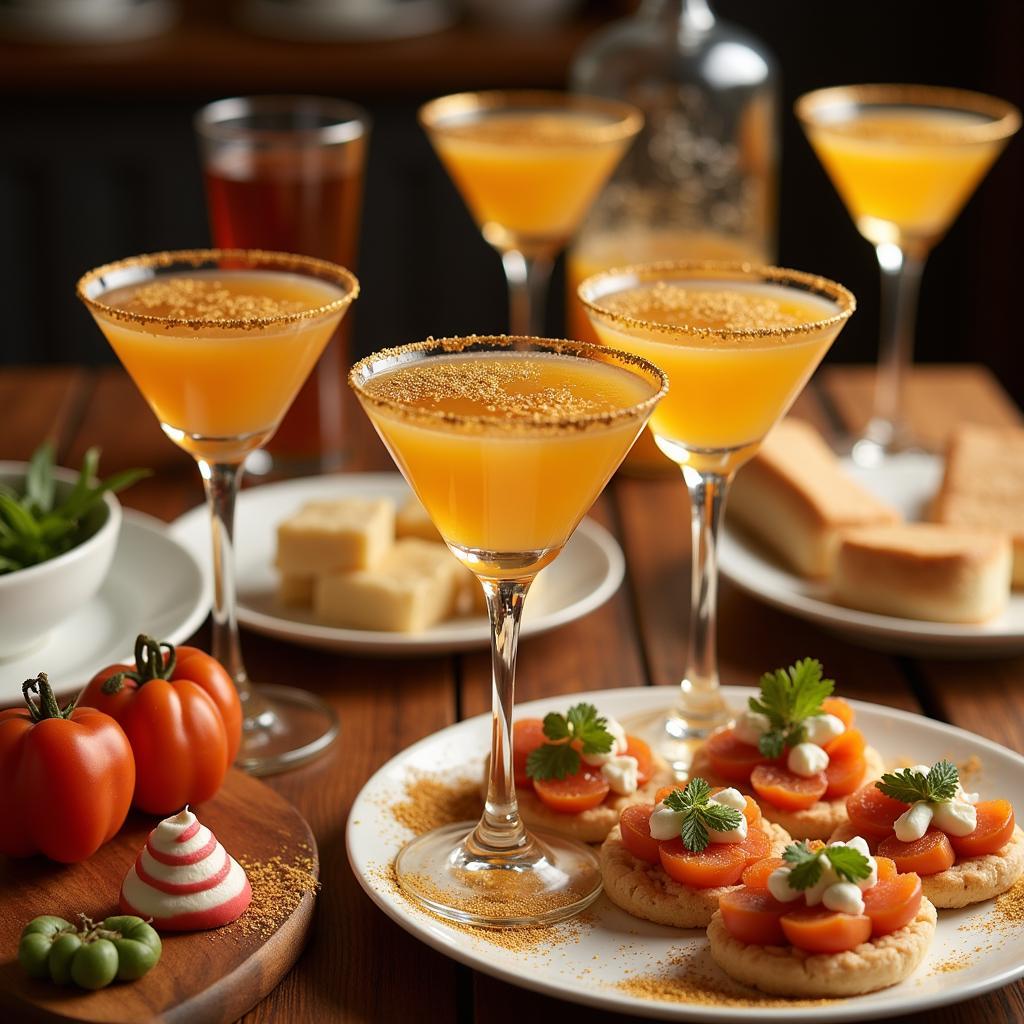The use of gold in food dates back centuries, often symbolizing wealth, prosperity, and a touch of regal extravagance. From delicate flakes to shimmering dust, “Gold On Food” is more than just a culinary trend – it’s an experience that tantalizes the senses and elevates dishes to new heights of luxury.
A Glimpse into the Golden History of Edible Gold
The historical use of gold in food can be traced back to ancient civilizations. Egyptians believed gold had magical properties and incorporated it into their food and drink. In medieval Europe, alchemists experimented with edible gold, believing it held the key to longevity and good health.
 Ancient Egyptian Feast with Edible Gold
Ancient Egyptian Feast with Edible Gold
Edible Gold: A Sensory Experience
Today, edible gold continues to captivate chefs and food enthusiasts alike. Its appeal lies not in its taste – which is essentially nonexistent – but in its ability to transform ordinary dishes into extraordinary culinary masterpieces. The delicate shimmer of gold adds a touch of magic and drama, turning every bite into a luxurious experience.
Beyond Aesthetics: The Practicality of Gold in Food
While the visual impact of gold is undeniable, its use in modern cuisine extends beyond mere aesthetics. Chefs and food artists use gold leaf to add texture and dimension to dishes. The delicate sheets, carefully applied, can transform desserts into edible sculptures, making a bold statement on any plate.
Gold dust, with its subtle shimmer, adds a touch of elegance to everything from cocktails to savory dishes. Imagine a perfectly seared steak sprinkled with gold dust or a vibrant cocktail rimmed with shimmering gold – each element contributes to a multi-sensory dining experience.
 Gold-Rimmed Cocktails and Appetizers
Gold-Rimmed Cocktails and Appetizers
Gold on the Menu: From Street Food to Haute Cuisine
The versatility of edible gold is evident in its widespread use across various culinary landscapes. In India, vark, a thin, handcrafted sheet of pure gold, is a common sight on sweets and traditional dishes, signifying prosperity and good fortune. In Japan, gold flakes adorn everything from sushi to sake, adding a touch of opulence to their culinary traditions.
Golden Guidelines: Safety and Consumption
Edible gold is considered safe for consumption, as it’s biologically inert and passes through the digestive system without being absorbed. However, it’s crucial to ensure that the gold used is 24 karat and certified as edible.
Gold on Food: A Feast for the Senses
In conclusion, the allure of “gold on food” lies in its ability to transform culinary experiences. It’s a testament to the artistry of chefs who continue to push the boundaries of food presentation and innovation. So, the next time you encounter gold on your plate, remember, you’re not just tasting food – you’re experiencing a piece of culinary history and a touch of edible opulence.
Frequently Asked Questions
1. What does edible gold taste like?
Edible gold is virtually tasteless and odorless.
2. Is edible gold safe to eat?
Yes, 24-karat gold that is certified as edible is safe for consumption.
3. What types of food can be decorated with gold?
Gold can be used to decorate a wide variety of foods, from desserts and chocolates to savory dishes, cocktails, and even sushi.
4. Where can I buy edible gold?
Edible gold can be purchased online or at specialty food stores.
5. Is edible gold expensive?
The price of edible gold varies depending on the type and quantity purchased.
Do you have more questions about edible gold or other unique culinary ingredients? Check out our other blog posts about golden dragon chinese food menu, pond goldfish food, and solid gold bison dog food. For information on exciting food trends, browse our website or contact us at 02437655121 or [email protected]. Our team at Mina Cones Food is always here to help! We are located at 3PGH+8R9, ĐT70A, thôn Trung, Bắc Từ Liêm, Hà Nội, Việt Nam.